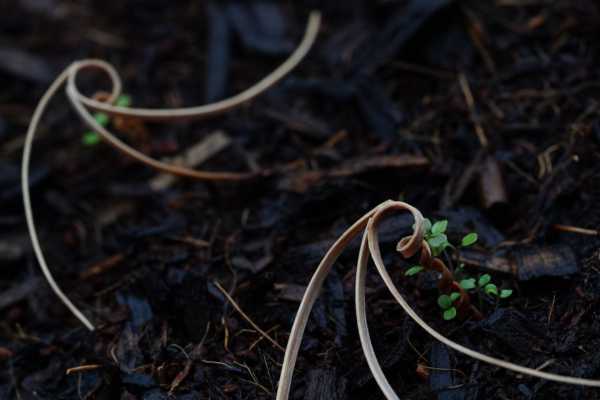Drill-like carrier helps seeds grow
This tiny burrowing device could turbocharge aerial seeding and reforestation efforts.

A research team has created a tiny burrowing carrier that could turbocharge aerial seeding and reforestation efforts.
The seeds of some plants such as Erodium have evolved a mechanism to bury themselves when it rains. Earlier this year, a Carnegie Mellon University team unveiled a biodegradable wooden carrier called E-seed that mimics this natural ability.
Aerial seeding can cover large and inaccessible areas but it traditionally suffers from low germination rates. The E-seed has been engineered to boost germination by burrowing itself into the soil.
The device could improve reforestation of hard-to-reach places, help address landslides, and reduce the impact of invasive species, according to its creators. The research behind E-seed was published in the February issue of Nature.
Three-pronged approach
Erodium’s stalk forms a tightly wound, seed-carrying body with a long, curved tail at the top. When it begins to unwind, the twisting tail engages with the ground, causing the seed carrier to push itself upright. Further unwinding creates torque to drill down into the ground, burying the seed.
But Erodium’s one-tailed carrier only works well on soils with crevices. To employ their E-seed carriers in a broader range of environments, the research team developed a three-tailed version that is more efficient at pushing itself upright.
“Our three-tailed carrier has an 80 per cent drilling success rate on flat land after two triggering cycles, due to the beneficial resting angle of its tail anchoring,” the authors wrote.
“Our system will improve the effectiveness of aerial seeding to relieve agricultural and environmental stresses.”
Although the carriers are currently fabricated in the lab, the researchers anticipate adapting the process to an industrial scale.
Oaken innovation
The team developed a five-step process including both chemical washing and mechanical molding to manufacture the seed carriers.
The possible materials considered by the researchers included hydrogels, paper and other forms of processed cellulose but they opted for locally-grown white oak which is often used in furniture.
“Seed burial has been heavily studied for decades in terms of mechanics, physics and materials science, but until now, no one has created an engineering equivalent,” says Lining Yao, the Cooper-Siegel Assistant Professor of Human-Computer Interaction at Carnegie Mellon University.
“The seed carrier research has been particularly rewarding because of its potential social impact. We get excited about things that could have a beneficial effect on nature.”
"The seed carrier research has been particularly rewarding because of its potential social impact. We get excited about things that could have a beneficial effect on nature."
The tech
E-seed’s design and construction were inspired by the self-burying mechanism of a plant called Erodium which evolved in arid climates. Unlike Erodium, which has a one-tailed carrier that works well on soils with crevices, the researchers developed a three-tailed version that is better at pushing itself upright, giving it a higher implantation success rate than that of Erodium seeds.
Who funds it
The research behind E-seed was published by a Carnegie Mellon University team in the February issue of Nature.
Is it ready to roll
Although the E-seeds are currently created in the lab, the researchers say the process can be scaled up for industrial production.





